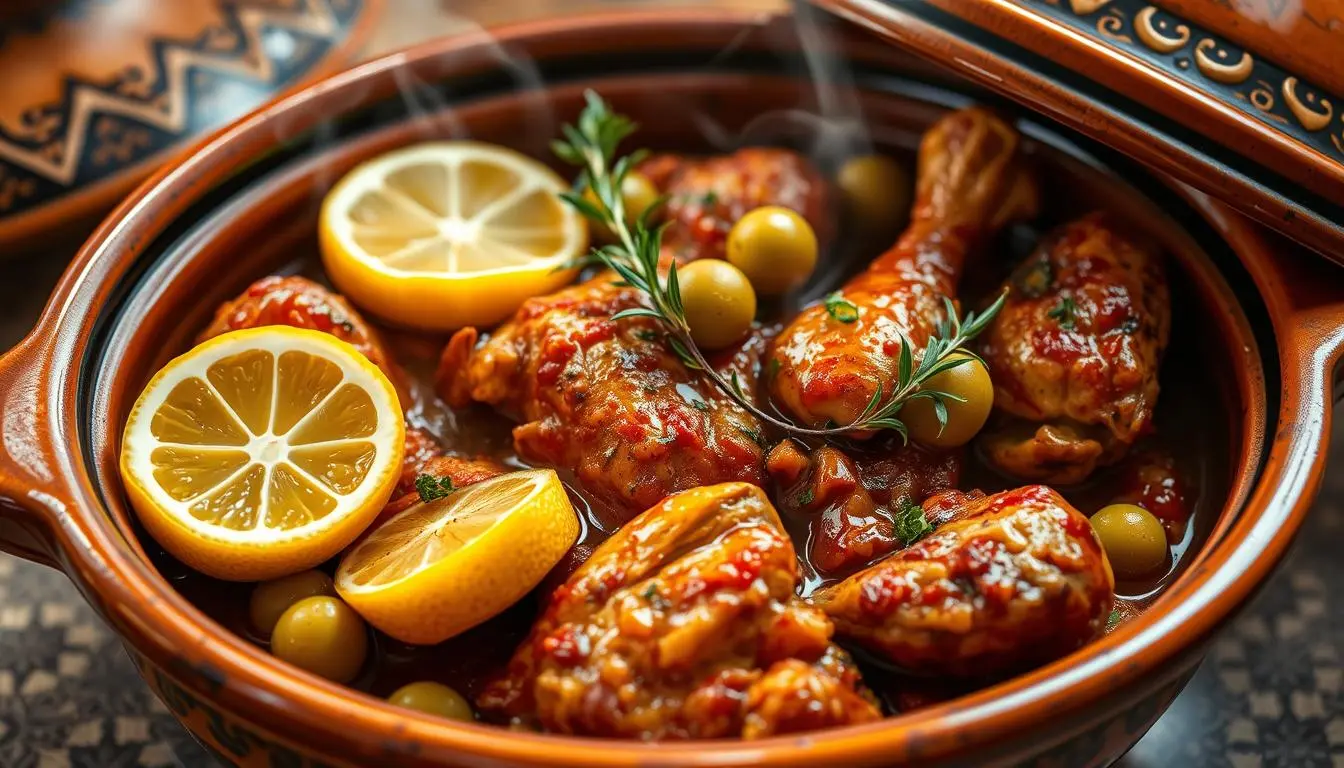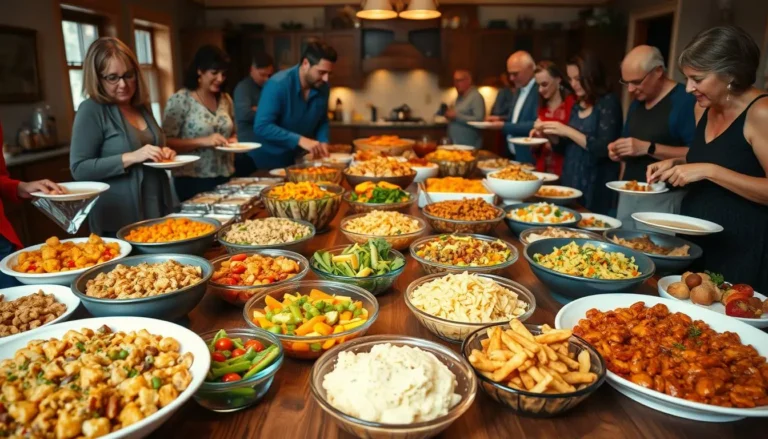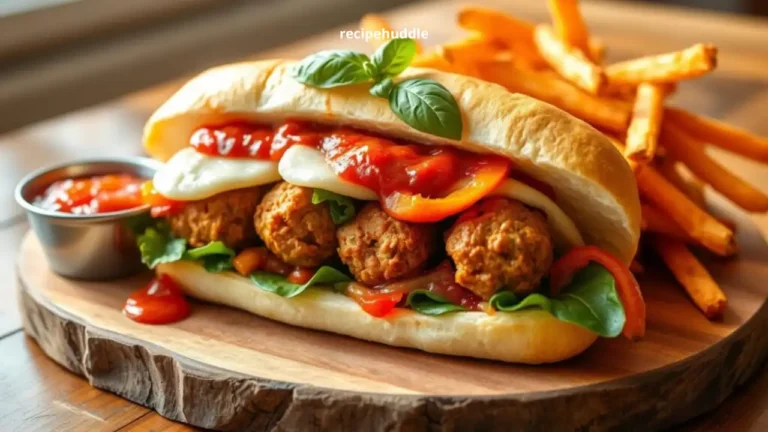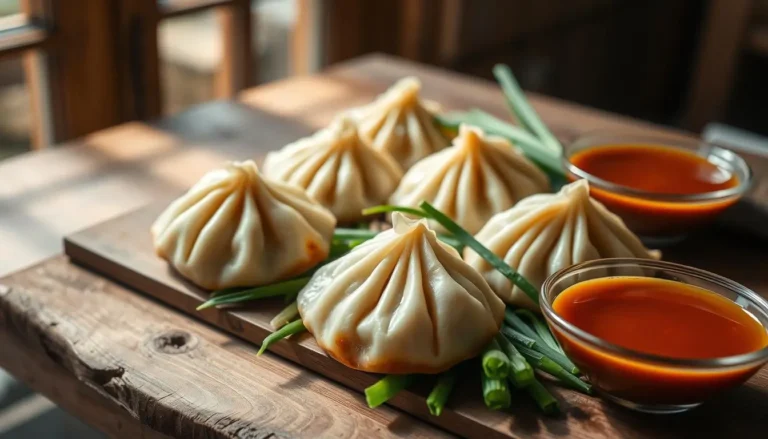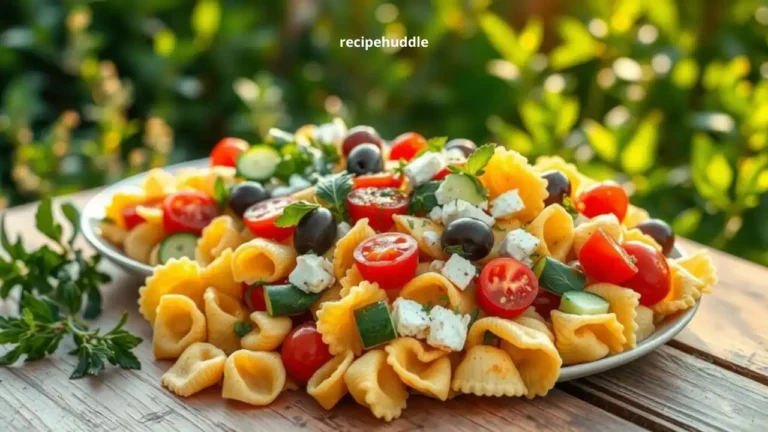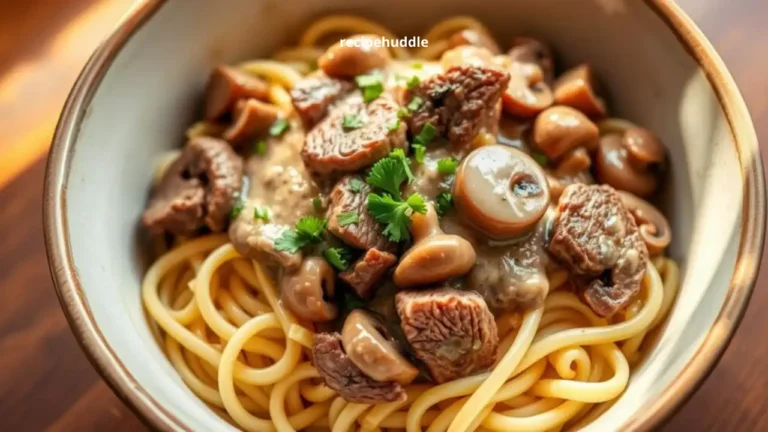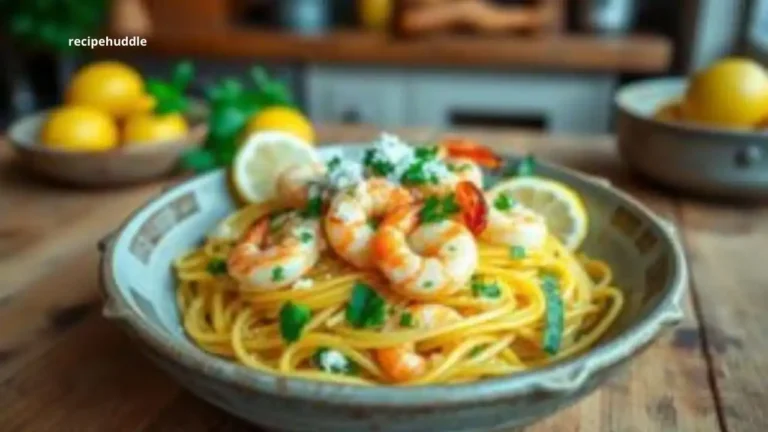Moroccan Chicken Tagine with Lemon and Olives
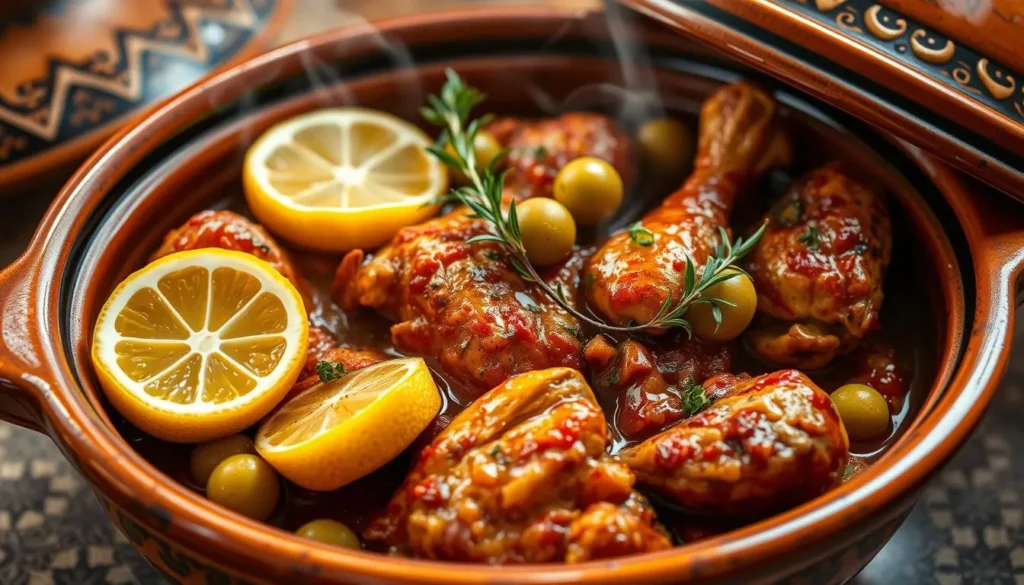
Delicious Moroccan Chicken Tagine with Lemon and Olives:
Imagine the scent of cumin and cinnamon filling your kitchen. It mixes with the tang of preserved lemons and salty olives. This is the magic of a true chicken tagine. It takes you to North Africa’s lively markets and cozy homes.
For many, like food writer Elise Bauer, their first taste of this dish is unforgettable. Now, you can make it at home and enjoy its rich flavors.
This recipe is more than cooking; it’s a journey. The earthenware tagine pot cooks ingredients slowly, blending chicken, citrus, and spices into a memorable dish. Each bite is a taste of tradition, mixing Mediterranean flavors with Morocco’s warmth. Let’s learn how to make this iconic dish.
Table of Contents
Key Takeaways
- Earthenware tagines cook food evenly, preserving bold flavors.
- Preserved lemons add a signature tang essential to authentic chicken tagine.
- Balance cumin, paprika, and ginger for authentic spice layers.
- Olive variety (like green or black) impacts texture and depth.
- Serve with couscous or bread to soak up every drop of sauce.
Introduction: A Journey into Moroccan Cuisine
Step into the vibrant world of Moroccan cooking, where every dish tells a story. Traditional Moroccan recipes blend history and taste, shaped by centuries of cultural exchange. The tagine, both a dish and its earthenware pot, symbolizes North African culinary artistry.
Discovering the Rich History of Tagine
The tagine’s journey started over 1,000 years ago. Berber tribes used conical pots to slow-cook meats and stews, keeping heat even. Arab influences later added spices like cumin and ginger. Mediterranean trade routes brought saffron and dried fruits.
Today, these earthenware pots are key in households, showing patience and tradition.
Embracing Traditional Moroccan Flavors
Traditional Moroccan recipes use balanced spice combinations. Key ingredients include:
- Preserved lemons—briny bursts that brighten rich dishes
- Golden saffron threads for earthy aroma
- Ras el hanout, a spice blend blending up to 30 ingredients
“A true tagine is a marriage of time, fire, and ingredients passed through generations.”
Exploring Moroccan recipes means enjoying layers of flavor—sweet, savory, and tangy. These flavors connect you to Morocco’s soul, from street markets to family tables.
Discovering Authentic North African Traditions
North African cuisine is a mix of old traditions and fresh ingredients. Moroccan cooking stands out with its unique spice mix. Let’s dive into what makes this cuisine so special.
Key Spices and Ingredients in Moroccan Cooking
Every spice in north african cuisine has a role. Start with paprika for smokiness, cumin for earthiness, and ginger for warmth. Turmeric and coriander add color and depth. Preserved lemons and golden raisins balance tang and sweetness in tagines.
- Paprika: Adds smoky undertones
- Cumin: Essential for earthy base notes
- Preserved lemons: Brighten dishes with acidity
The Mediterranean Influence on North African Cuisine
Mediterranean cooking methods like slow-cooking blend well with local flavors. Olive oil from coastal groves is used for sautéing. Citrus and herbs like thyme add a Mediterranean touch. This mix makes dishes both familiar and exotic.
| Mediterranean | North African |
| Olive oil | Argan oil (in some regions) |
| Tomatoes | Prunes or dates for sweetness |
| Basil | Culantro or ras el hanout spice blends |
Knowing these basics helps you make authentic dishes at home. Seek out quality spices and play with flavors to honor this rich heritage.
Step-by-Step Recipe Guide
Learn to make this traditional moroccan dish with easy steps. Each step is designed to bring out the authentic flavors and textures.
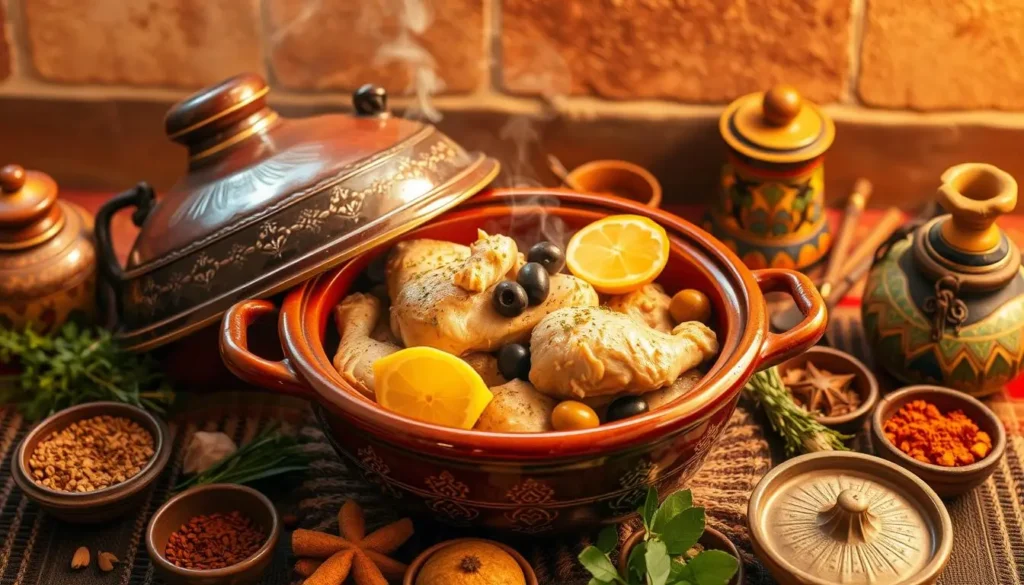
Preparation and Marinating Techniques
Start by mixing 1 tbsp cumin, 1 tsp paprika, and ½ tsp saffron in a bowl. Rub this spice blend into 4 chicken thighs. Then, add 2 preserved lemons, finely chopped, and 3 tbsp olive oil. Let it marinate for 2 hours in the fridge.
- Pat chicken dry before seasoning for better spice adhesion
- Use a non-reactive dish for marinating to prevent flavor changes
The Cooking Process and Essential Tips
Heat a tagine pot or heavy Dutch oven over medium heat. Brown the marinated chicken on all sides, then remove to a plate. Sauté 1 diced onion in the same pot until translucent. Return chicken to the pot, add ½ cup water, and 8 pitted olives. Cover and simmer for 45 minutes.
- Check liquid levels every 15 minutes to avoid burning
- Adjust salt after cooking to highlight preserved lemon’s brine
Enjoy with couscous for a full meal. This slow-cooking method keeps the dish tender and full of flavor, just like in traditional moroccan dish cooking.
Tips for Perfecting Your Moroccan Chicken Tagine with Lemon and Olives
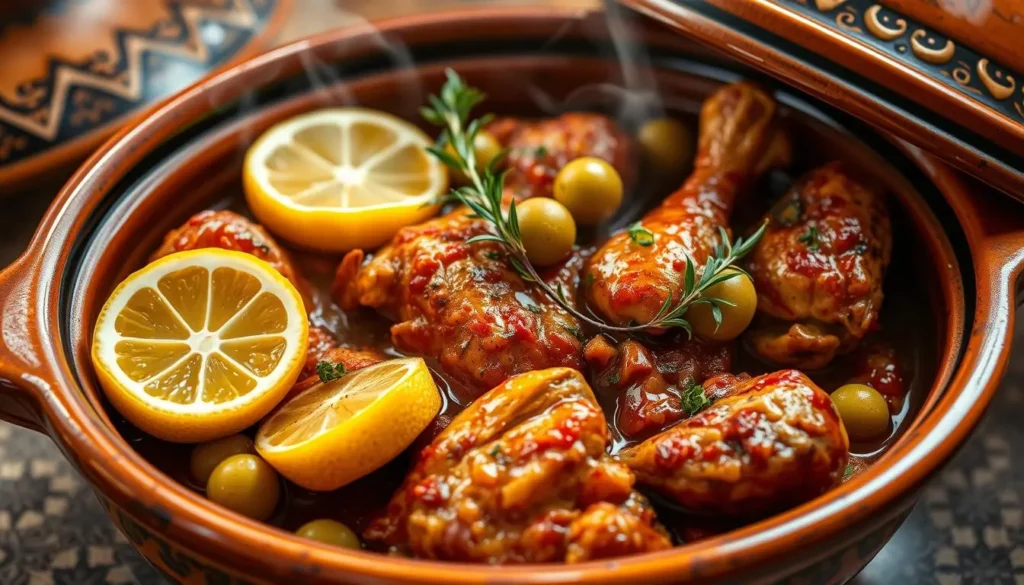
Mastering tagine recipes means balancing bold flavors and sticking to traditional methods. Here’s how to improve your dish for the best taste:
Enhancing Lemon and Olive Flavors
Preserved lemons bring a salty depth. Rinse them well before chopping to cut down on salt. For a fresh touch, add pitted Kalamata olives in the last 10 minutes of cooking. Remember, a squeeze of fresh lemon at the end will brighten the dish.
Balancing Spices for a Rich, Authentic Taste
Here are steps to avoid spice imbalance:
- Toast cumin and paprika briefly to release aroma before mixing.
- Add harissa paste gradually—start with ½ tsp and adjust to your heat preference.
- Pair cinnamon with a dash of ginger to create warmth without overpowering.
| Spice | Recommended Amount | Key Notes |
| Cumin | 1 tsp | Grind fresh for maximum flavor |
| Paprika | 1 tsp | Use smoked paprika for depth |
| Harissa | ½ tsp | Adjust based on heat tolerance |
Try these techniques to make your tagine recipes your own. Yet, stay true to North African traditions.
Pairing Sides and Beverages for a Complete Meal
Choosing the right sides and drinks for your lemon chicken or tagine makes every bite better. Add these easy pairings to your meal for a well-rounded taste experience.
Suggested Side Dishes to Complement Your Tagine
Balance the bold flavors of your dish with these sides:
- Couscous with toasted almonds and olive oil
- Rice pilaf with saffron and lemon zest
- Warm pita bread for sauce
- Roasted veggies like eggplant or zucchini
Wine and Beverage Pairings for a Mediterranean Touch
Match your meal with drinks that highlight citrus and spice:
- Light dry whites like Vermentino or Chenin Blanc
- Sparkling water with lemon for freshness
- Light red wines such as Pinot Noir or Cinsault
- Mint tea or honeyed green tea
These drinks pair well with both the tagine and lemon chicken. Try different ones to find your favorite!
Innovative Variations of the Classic Tagine Recipe
Get creative in the kitchen by making the tagine your own. Keep the authentic moroccan flavors but add your twist. Use different ingredients to make olive recipes that you love.
- Try bone-in chicken thighs for tender meat and rich broth.
- Swap preserved lemons with fresh lemon zest, though note the tangy depth they add.
- Add diced sweet potatoes or golden raisins for natural sweetness.
- Increase cumin or paprika to deepen spice layers without overpowering herbs.
- Mix black and green olives for contrasting textures in your olive recipes.
Pairing olives with apricots makes a sweet-savory mix great for veggie dishes. Use quinoa instead of couscous for more protein. For a smoky flavor, char peppers before adding.
Always test spice levels first. Adjust cayenne or cinnamon to keep the authentic moroccan flavors right.
Try regional twists: add saffron for a royal touch or coconut milk for creaminess. Store-bought harissa paste adds heat quickly. Freeze leftover broth for soups later, blending tradition with convenience.
Conclusion
This journey through Moroccan Chicken Tagine shows how Mediterranean cooking mixes tradition with creativity. You’ve learned to balance spices like cumin and paprika, tapping into centuries of cooking history. The slow-cooking method makes the meat tender, while lemon and olives add a fresh touch.
This recipe is more than just ingredients; it opens a door to North African traditions. The mix of Mediterranean flavors and local spices makes the dish both cozy and exciting. You can serve it with couscous or try new twists, connecting with a lively culture with every bite.
Perfecting Mediterranean cooking takes time and practice. Feel free to adjust the spices to your taste and try different sides or wines. Sharing this meal with others makes it a special experience, just like in a Moroccan home or a Mediterranean market.
Now, you’re ready to cook with confidence. Let this tagine inspire you to explore more global cuisines, where every dish has a story. The kitchen is your canvas, and Mediterranean cooking is your inspiration.
FAQ
What is a Moroccan Chicken Tagine?
A Moroccan Chicken Tagine is a traditional dish from North Africa. It’s made with chicken cooked slowly in a tagine pot. The pot is filled with spices, preserved lemons, and olives. This dish is famous for its rich, aromatic flavors and is a key part of Moroccan cuisine.
Why should I use a tagine for cooking?
Using a tagine helps cook food evenly and keeps moisture in. This makes the flavors of your ingredients better. The tagine’s unique shape circulates steam, making your dish tender and full of flavor, like the Moroccan Chicken Tagine with Lemon and Olives.
What key spices are essential for Moroccan cooking?
Important spices in Moroccan cooking include cumin, coriander, cinnamon, saffron, and paprika. These spices give North African dishes their unique taste. They make your chicken tagine dish even more flavorful.
How can I balance the lemon and olive flavors in my tagine?
To balance the tartness of lemons and the saltiness of olives, add them carefully during cooking. Start with a small amount, taste, and adjust as needed. This ensures your tagine has a balanced flavor that stays true to Moroccan traditions.
What are some side dishes that pair well with Moroccan Chicken Tagine?
Traditional sides include Moroccan bread, couscous, or rice. These help soak up the tagine’s savory sauce. They make your meal complete, following Mediterranean cooking traditions.
Can I customize the chicken tagine recipe?
Yes! You can change the recipe by using different proteins like lamb or vegetables. Or, you can adjust the spices to your liking. Try new things while keeping the essence of Moroccan cuisine.

